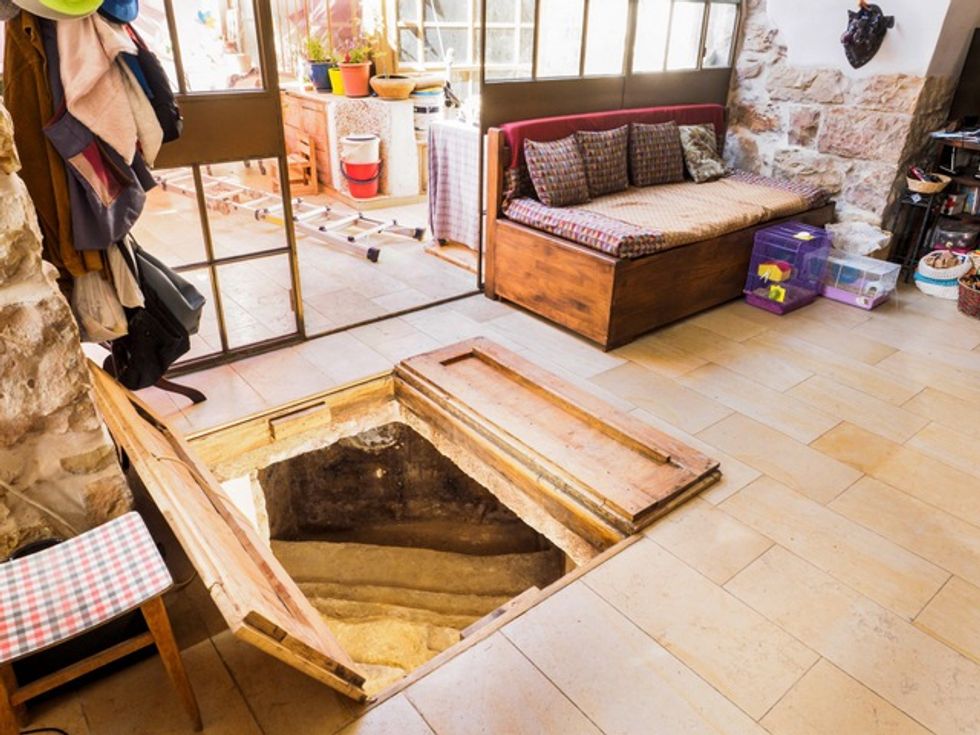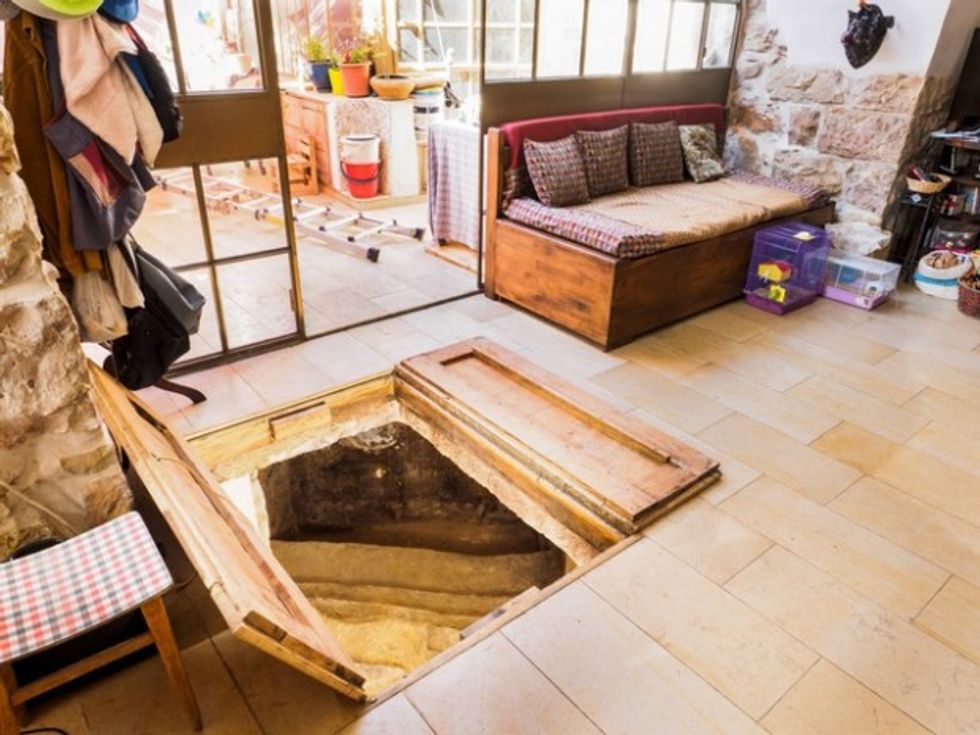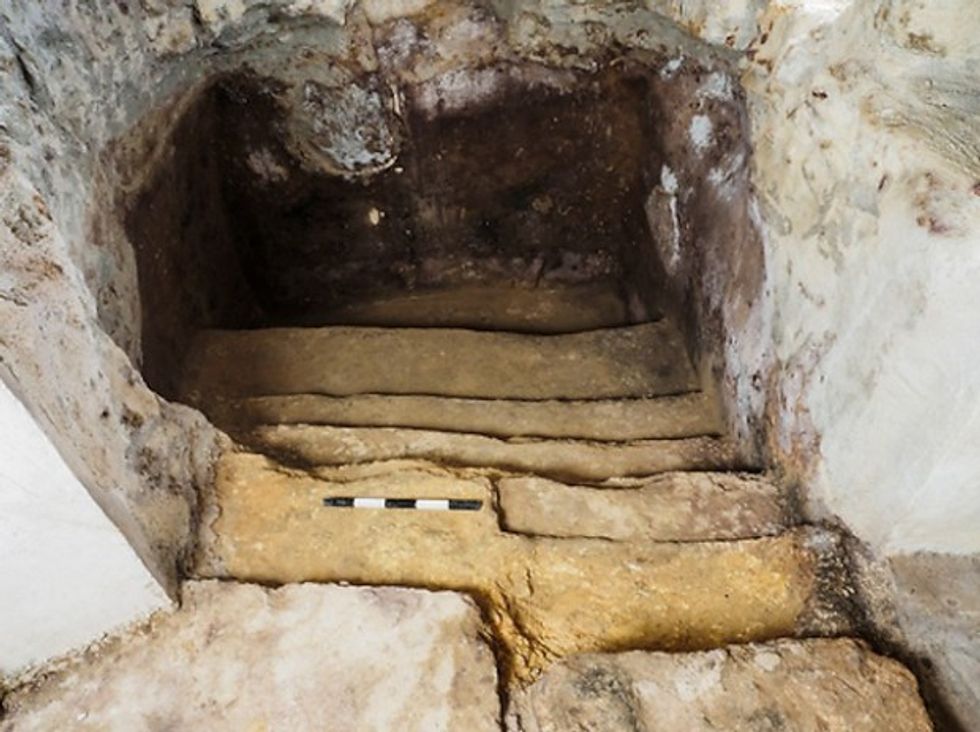
What was hiding behind these wooden doors was a ritual bath suggesting that the place was inhabited by Jews 2,000 years ago. (Photo: Assaf Peretz/Israel Antiquities Authority)

An Israeli family in Jerusalem renovating their home discovered a 2,000-year-old ritual bath under their living room floor.
The Israel Antiquities Authority announced said Wednesday that the bath, called a mikveh, was discovered under the living room floor of a home in Jerusalem’s Ein Kerem neighborhood.

A mikveh is used by religious Jews for ritual immersions.
Anyone who has ever renovated knows the disruption and chaos that can ensue; just imagine if a team of archaeologists joins in.
After the homeowners – who asked not to be named – called the Antiquities Authority with the suspicion that their discovery might be significant, archaeologists arrived and “were amazed to discover that a pair of wooden doors beneath a stylized rug in the middle of a pleasant family’s living room concealed an ancient ritual bath,” the Antiquities Authority said in a statement.

“Initially, we were uncertain regarding the importance of the find revealed below our house and we hesitated contacting the Israel Antiquities Authority because of the consequences we believed would be involved in doing so,” the homeowners said in a statement. “At the same time, we had a strong feeling that what was situated beneath the floor of our house is a find of historical value and our sense of civic and public duty clinched it for us."
The ancient bath, which measured 11.5 feet long, 8 feet wide and 6 feet deep, was “rock-hewn and meticulously plastered according to the [Jewish] laws of purity,” the Antiquities Authority explained.
The pool included a staircase leading to its bottom, allowing its users 2,000 years ago to fully immerse themselves as part of the purification tradition.
The family also found potentially historically valuable items inside the ritual bath, including pottery vessels dating to the first century as well as traces of fire damage that researchers speculated might be evidence of the Romans’ ransacking of Jerusalem in 70 A.D. when the Second Temple was destroyed.
The archaeologists identified fragments of stone vessels, which they said were commonly used by Jews during the period of the Second Temple as they believe stone cannot be contaminated and remains pure.
“Such instances of finding antiquities beneath a private home can happen only in Israel and Jerusalem in particular,” said Jerusalem district archaeologist Amit Re’em, noting that the discovery had “archaeological importance.”
“Ein Kerem is considered a place sacred to Christianity in light of its identification with ‘a city of Judah’ – the place where according to the New Testament, John the Baptist was born and where his pregnant mother Elisabeth met with Mary, mother of Jesus,” Re’em explained.
The archaeologist noted that there have been few archaeological discoveries dated to the Second Temple period found in that particular neighborhood.
“The discovery of the ritual bath reinforces the hypothesis there was a Jewish settlement from the time of the Second Temple located in the region of what is today Ein Kerem,” Re’em added.
The Antiquities Authority honored the homeowners Wednesday for displaying good citizenship and reporting their discovery.